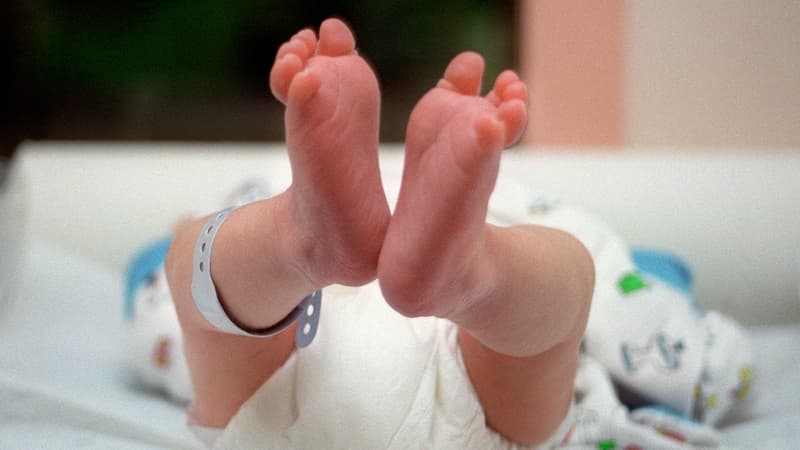This is undoubtedly the end of the “French demographic exception.” Like many developed countries that have been suffering from this phenomenon for longer, France is slowly sinking into a worrying birth rate crisis.
The figures speak for themselves: with 663,000 babies born last year, the number of births in the country has decreased by more than 20% in 15 years, according to INSEE. The total fertility rate stood at 1.62 children per woman in 2024, its lowest level since the end of the First World War.
This decline in the birth rate is currently at the center of an information mission to the National Assembly to try to understand the causes, but also the consequences. Among them: its impact on the pay-as-you-go pension system, whose financial situation is already in poor condition.
Specifically, the continued decline in births will reduce the number of contributors in the long term compared to the number of retirees. “The current proportion is 1.5 contributors per retiree in the general system. In 1970, the proportion will slowly tend to 1. With 1, the question of sustainability (of the system) is posed very directly,” stressed Renaud Villard.
The Retirement Guidance Council’s Overly Optimistic Assumptions
In its latest report published in June, the Pension Guidance Council (COR) already forecasts a system deficit of 6.6 billion euros in 2030 and more than 45 billion euros in 2070. However, these forecasts are based on very optimistic fertility assumptions with a “reference” scenario of 1.8 children per woman in the coming years and a “low” scenario of 1.6 children per woman, or approximately the level current.
However, nothing says that the situation will not get worse. “With 1.6, we are still the champions of the European Union. But no one knows if 1.6 is a plateau on which we will remain or if we will join other countries: Italy is 1.2, Spain is 1.2 (…). The EU average is 1.45…”, recalled Gilbert Cet, president of the COR.
If the organization has maintained such favorable fertility hypotheses, it is because it is based on INSEE demographic projections dating from 2021 and whose next update is not scheduled until November 2026. Without waiting for this deadline and taking into account recent developments, “we will certainly return to these hypotheses in our next report, in any case we will discuss them,” warned Gilbert Cet.
A deterioration of the deficit “by 60%” in 2070?
Even if the fertility rate remained at 1.6 children per woman in the long term, the consequences would be serious for the pension system compared to the reference scenario of 1.8. Expenditures would continue to increase, particularly due to the aging of the population, but GDP would be lower “due to a less dynamic active population associated with fewer births,” notes the COR.
As a result, the weight of pensions in national wealth would increase from 2040 and would be 0.6 points of GDP higher in 2070 than it would have been with a fertility rate of 1.8 (around 14.8% compared to 14.2%).
Going from 1.8 to 1.6 would lead to “a deterioration in the system’s deficit of 60% between now and 2070”, that is, about 30 billion euros, also warns Nathanaël Grave, deputy director of foresight at the CNAV Department of Statistics, Forecasting and Research.
Fertility “is not the only management tool”
This review of the financial balance of the pension system “gives chills”, acknowledges Renaud Villard. But he points out that fertility is far from being “the only management tool”, since many other parameters can influence the relationship between the number of contributors and the number of retirees.
For Gilbert Cet, “the key element is the employment rate.” Although it has been increasing for several years, mainly as a result of various pension reforms, France is far behind in this area compared to its neighbors.
In 2024, according to Eurostat, in France 69.9% of people between 15 and 64 years old were employed. This is a level lower than the EU average (71.5%) and significantly lower than that of some of our neighbors such as Germany (79.8%) or the Netherlands (84.4%).
“This difference in employment rates is explained by the fact that, in the club of the most advanced countries, France is a poor country. If with the wave of a magic wand we had the GDP per capita of a country like the Netherlands, social spending would be 25% of GDP and pension spending 11%,” says Gilbert Cet.
The president of the COR warns, however, that the improvement in the employment rate will not be enough to offset the effects of the fall in the birth rate on the financial balance of the pension system. The economist also calls for “acting on productivity”, although “it is not done with a snap of the fingers.” Meanwhile, Nathanaël Grave recalls, as a consolation, that the deterioration of retirement accounts linked to the decline in birth rates until 2070 is a “transitional effect”, since “in the much longer term, if there are fewer births, there will also be fewer retirees, so this should balance out.”
Source: BFM TV


